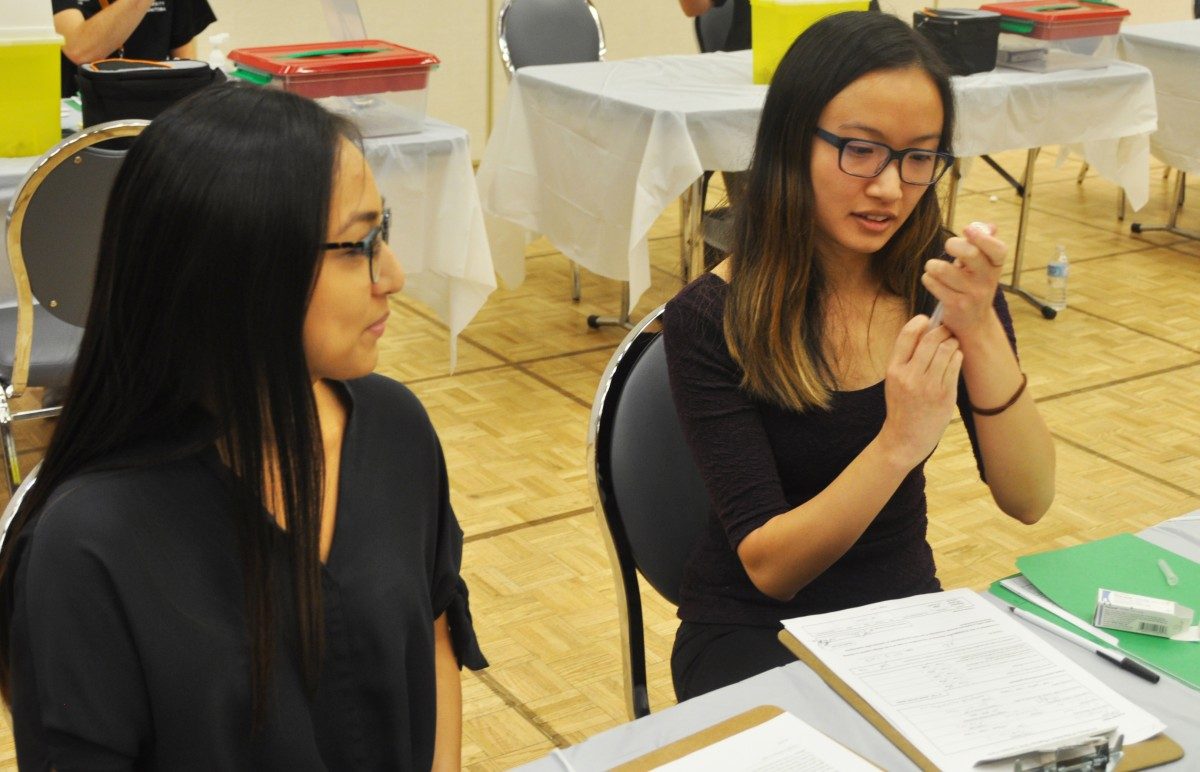
College of Nursing students prepare vaccinations for the free flu clinic at Fort Garry campus.
Free flu vaccine clinic has collaborative focus
On October 30 and 31, 95 Rady Faculty of Health Sciences volunteer students from the College of Nursing, the Max Rady College of Medicine, the College of Pharmacy, and the Master of Physician Assistant Studies program administered free flu vaccines to students, staff, and the public in University Centre at the Fort Garry campus.
The flu clinic will also be offered November 6, Theatre D (Skills Lab) in the Basic Medical Sciences Building at the Bannatyne campus and on November 14 at the University of Winnipeg campus. Blood tests and immunization reviews are also available at the clinics.
For Rachel Mangiacotti, a fourth-year nursing student, the opportunity to collaborate with other health-care disciplines was an eye opener.
“As nursing students, because we’re on a different campus we don’t get a whole lot of opportunities to interact with the different colleges from Bannatyne, but it is nice to work together in a setting like this,” she said. “It’s also a nice experience to see the community health side of nursing. We’re not in our scrubs or a hospital. It’s a different setting and it’s nice to provide the patient education.”
In addition to providing free vaccinations to the local community, for every vaccination $5.00 will be donated to UNICEF to fund vaccine programs in developing countries.
According to Dr. Dana Turcotte, Clinical Assistant Professor in the College of Pharmacy, the clinic gives students a special opportunity to not only gain practical knowledge but also helps to bolster their confidence.
“It’s an invaluable experience,” she says. “We’ve had students come here who were terrified to do their very first injection and they’re leaving here with a lot of confidence that they can translate into their clinical practice in their community rotations.”
Dr. Lalitha Raman-Wilms, the new dean of the College of Pharmacy was also on hand to get a first-hand look and was impressed by the interprofessional way the clinic is run.
“We know that collaborative care provides better outcomes for our patients. What better way to train our students than to work that way early on so that when they’re in practice they get used to reaching out and working collaboratively,” she said. “When we run clinics like this together the community also sees the students working together. It’s not only that the students get used to working together, the community sees all of them as team members and hopefully that becomes a natural thing to expect.”






